This is a technique people have been asking me about since my Rockabilly Roustabout video although it’s a technique I use often. But if you want to see how it’s really done you have to check out James Hill.
Strum blocking is a way of playing single notes with strums. You block off the strings you don’t want to sound so only one note rings.
There are a few advantages to doing this. It makes for a much smoother transition between chords and single notes in terms of tone and in terms of playing. It also gives you much more attack and makes it easier to play quickly.
The first thing you need to get down is how much pressure to put on the strings. You want to rest your hand on the strings hard enough so they don’t ring but soft enough that you’re not fretting them. Test it out by resting your fretting-hand fingers on all the strings and strumming. If you hear a sharp click like the first half of this MP3, you’re doing in right. If you hear some tones coming through like in the second half, press a little harder.
The toughest part is finding the fingers to cover the strings. There aren’t any hard and fast rules here, but this is what I do.
If the note is on the A-string and I’m using my index finger to fret, I’ll use my thumb to block g-string, my middle on the E-string and ring on the C-string (with my pinkie floating around as an extra bit of cover. Like this:
If I’m using my ring finger on the A-string, I’d probably barre across the strings with my index like this:
Just because a finger is being used for fretting, doesn’t mean it can’t be used for blocking as well. Here I’m fretting the C-string with my index finger and using the underside of it to block the E and A strings.
In this situation I’d usually use my spare fingers to double up on the strings as an extra bit of safety.
Try out a few different finger and string combinations until you’re happy you’ve got the basic idea. Then move on to the examples.
Example 1
This example is all down strums.
Example 2
Here we’ve got down and up strums. And you’re alternating between block strums and fully muted strums.
Example 3
Here’s the main riff of Rockabilly Roustabout slowed down.
Example 4
And this is the part where you have to switch quickly between chords and single notes.
Example 5
Finally, here’s the tab for the strum-blocking section of Rockabilly Roustabout
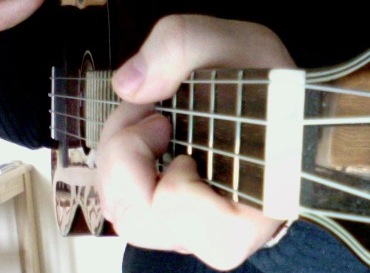
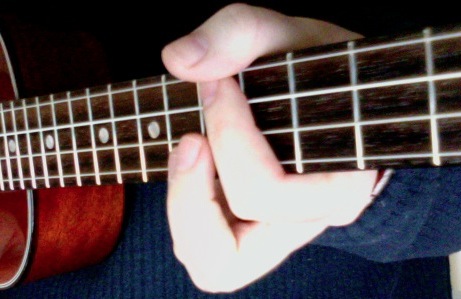
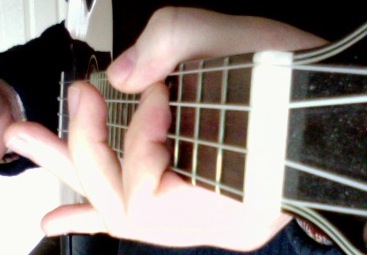




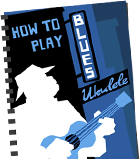
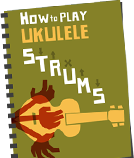

Excellent post, Al! Thanks for the clear and detailed information.
I’m going to give strum blocking a try.